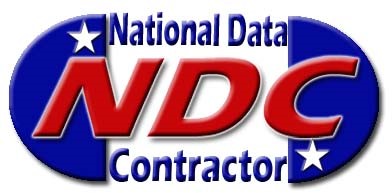Let NDC be your fiber optic cable testing service partner. We certify your fiber optic cables, connectors, and hardware to ensure they meet performance standards; enhancing the efficiency of your network.
Our certifications cover various standards outlined at the end of this article. With the help of our professional fiber optic cable testing service, you can be sure that your business infrastructure will be optimized, and receive the best possible communication links that your cable can carry, resulting in improved network performance.
To ensure your cables perform to standards, our fiber optic cable testing service techs conduct thorough testing with the best equipment for the job. NDC techs are trained in evaluating the quality and functionality of various types of fiber optics products, ensuring that they meet the necessary standards for efficient data transmission.
The process involves begins with a detailed inspection of the cables to identify any physical damage, such as cuts, bends, or kinks that may affect signal transmission. This visual inspection is followed by end-face inspection, where the connectors are examined for dirt, scratches, or other contaminants that could degrade signal quality. By identifying and rectifying these issues early on, technicians can prevent potential signal loss or interference when testing.
After the initial inspection, technicians proceed to perform a series of tests to evaluate the performance of the fiber optic cables. One of the most common tests is the insertion loss test, which measures the attenuation of the signal as it travels through the fiber optic cable. This test helps our technicians determine the overall efficiency of the cable and identify any potential signal loss points that may require further investigation.
Another important test is the reflectance test, which measures the amount of light reflected back from the cable's connectors. High reflectance levels can cause signal degradation and impact the overall performance of the fiber optic cable. By conducting this test, our techs can identify any issues with the connectors and take corrective actions to improve signal quality.
In addition to these tests, technicians also perform a bandwidth test to evaluate the cable's capacity to carry data at high speeds. This test helps determine the maximum data transmission rate that the fiber optic cable can support, allowing end-users to optimize their network performance and efficiency.
When testing fiber optic cables, our techs must adhere to specific standards to ensure accurate and reliable results. The most common standards used in fiber optic cable testing include the Telecommunications Industry Association (TIA) standards and the International Electrotechnical Commission (IEC) standards. These standards provide guidelines for testing procedures, equipment calibration, and data interpretation, ensuring consistency and accuracy in testing processes.
Furthermore, technicians must also follow safety protocols when conducting fiber optic cable testing to prevent accidents and ensure a secure working environment. Safety measures such as wearing appropriate protective gear, using insulated tools, and avoiding exposure to laser light are essential to safeguard both technicians and the integrity of the fiber optic cables.
Our testing services are crucial in maintaining the efficiency and reliability of communication networks. By following a systematic testing process, identifying common types of fiber optics, and adhering to testing standards, organizations can ensure the seamless transmission of data across their networks.
- Telecommunications Industry Association (TIA) Fiber Optic Testing Standards (TIA-526)
- International Electrotechnical Commission (IEC) Fiber Optic Testing Standards (IEC 61753)
- American National Standards Institute (ANSI) Fiber Optic Testing Standards (ANSI/TIA-568)
- Institute of Electrical and Electronics Engineers (IEEE) Fiber Optic Testing Standards (IEEE 802.3)
- National Fire Protection Association (NFPA) Fiber Optic Testing Standards (NFPA 70)
- Fiber Optic Association (FOA) Fiber Optic Testing Standards
- International Organization for Standardization (ISO) Fiber Optic Testing Standards (ISO/IEC 24764)
- UL” GR-20, 326, 409, 409-CORE, etc.
